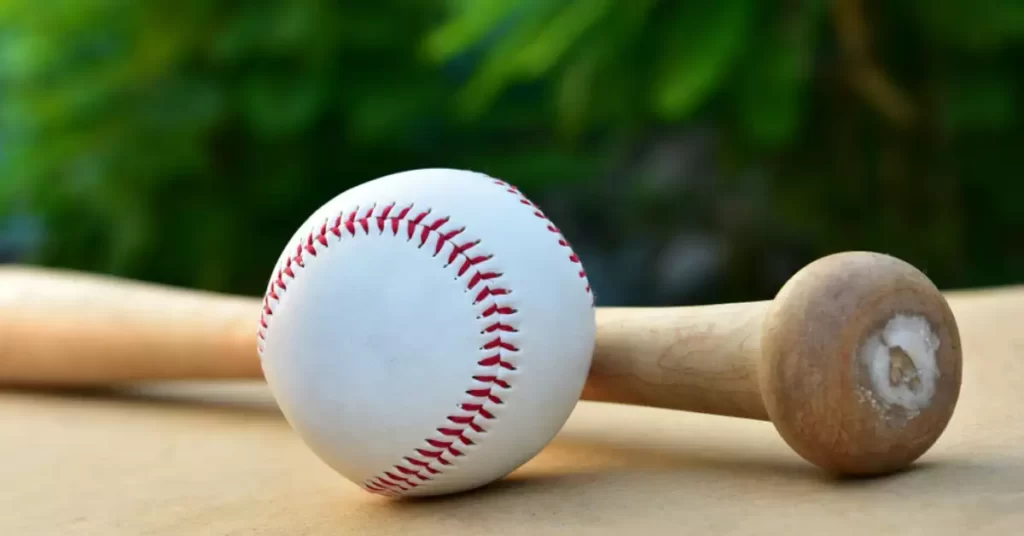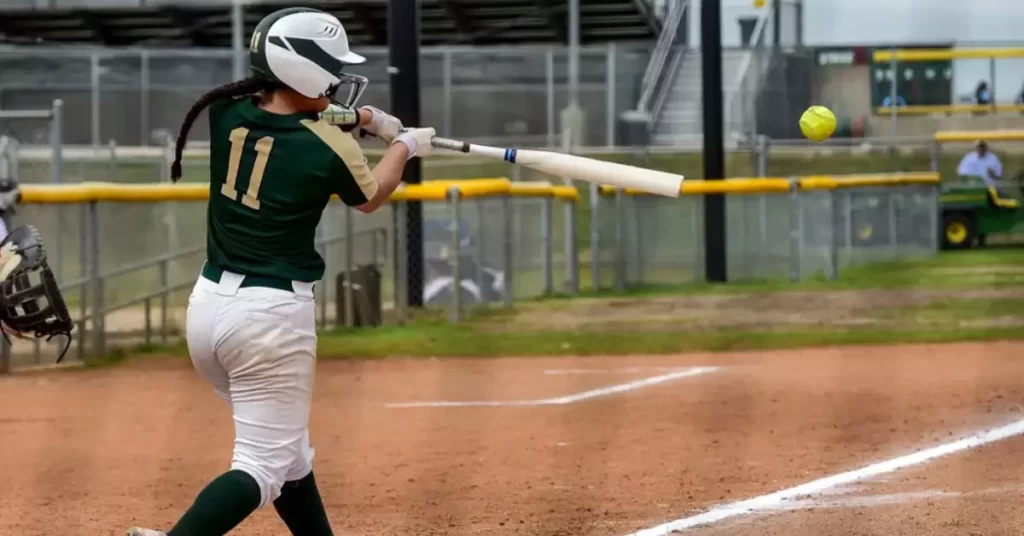The world of sports is filled with subtle nuances that make each game unique and thrilling. Baseball and softball, while sharing many similarities, are distinct games with their own set of rules and equipment. Among these differences, the bats used in each sport stand out as a primary factor that sets them apart.
Baseball bats and softball bats differ in their construction, size, and materials. Baseball bats are generally longer, thinner, and made of various materials, while softball bats tend to be shorter, thicker, and often made of specific materials to cater to the sport’s unique demands.
Dive into the fascinating world of bats and discover the critical distinctions that influence players’ performance in baseball and softball. Unravel the science behind these iconic sports tools and learn how their differences impact the games we love. Let’s embark on this captivating journey together!
Overview of Baseball Bats
Construction
Baseball bats come in various shapes and sizes, but their construction generally remains the same. The three main components are the handle, the barrel, and the knob. The handle is the narrow part of the bat that players grip, while the barrel is the wider, hitting surface. The knob is the rounded end of the bat, which helps keep the player’s hands in place while swinging.
Materials
Traditionally, baseball bats have been made from wood, but modern bats can be crafted from aluminum, composite materials, or a mix of both. Each material has its advantages and disadvantages, with wood offering a classic feel and aluminum and composite bats providing increased durability and performance.
Performance
Baseball bats are designed to maximize performance on the field, with the ideal bat offering a balance of power, speed, and control. The best bat for each player depends on their unique preferences and needs, including their swing style, strength, and position on the field.

Overview of Softball Bats
Construction
Softball bats share the same basic construction as baseball bats, with a handle, barrel, and knob. However, there are subtle differences in the dimensions of these components, which we will explore later in the article.
Materials
Like baseball bats, softball bats can be made from a variety of materials, including wood, aluminum, and composite materials. The choice of material depends on the player’s preferences and the specific requirements of their league or level of play.
Performance
Performance is key when it comes to choosing a softball bat, with the ideal bat offering a balance of power, speed, and control. Factors such as swing weight, barrel size, and material all contribute to a bat’s overall performance.
Differences in Bat Length and Weight
Baseball Bat Dimensions
Baseball bats tend to be longer and heavier than softball bats. They typically range from 24 to 34 inches in length and weigh between 16 and 36 ounces, depending on the specific model and league requirements.
Softball Bat Dimensions
Softball bats are generally shorter and lighter than baseball bats, with lengths ranging from 26 to 34 inches and weights between 18 and 26 ounces. These dimensions are designed to accommodate the differences in the sport, such as the larger ball and shorter distance between the bases.

Differences in Barrel Diameter
Baseball Bat Barrel Diameter
The barrel diameter of a baseball bat typically measures 2 5/8 inches or 2 3/4 inches, depending on the league and level of play. The larger barrel diameter allows for a bigger sweet spot, which can improve contact and power when hitting the ball.
Softball Bat Barrel Diameter
Softball bats generally have a larger barrel diameter than baseball bats, usually measuring 2 1/4 inches or 2 3/8 inches. The larger diameter is designed to accommodate the larger size of the softball and helps provide a larger sweet spot for more consistent contact.
Differences in Material and Construction
Baseball Bat Materials
Baseball bats can be made from various materials, including:
Wood: Traditional choice for many players and leagues, offering a classic feel and sound when hitting the ball. Wood bats require more skill to use effectively and can break more easily than other materials.
Aluminum: Offers increased durability and a lighter weight compared to wood, making it easier for players to generate faster swing speeds.
Composite: Made from a blend of carbon fiber and other materials, composite bats provide a larger sweet spot and reduced vibration, allowing for improved performance and feel.
Softball Bat Materials
Softball bats also come in a variety of materials, including:
Wood: Often used in recreational leagues and for practice, wood softball bats provide a traditional feel but may not offer the same level of performance as other materials.
Aluminum: A popular choice for many softball players due to its durability and lighter weight, allowing for faster swing speeds and greater control.
Composite: Softball bats made from composite materials offer a larger sweet spot, reduced vibration, and better overall performance compared to wood and aluminum options.

Differences in Performance
Baseball Bat Performance
Baseball bats are designed to maximize performance by providing a balance of power, speed, and control. Factors such as barrel size, swing weight, and material can all impact a bat’s performance, with some bats offering greater power while others emphasize a faster swing speed.
Softball Bat Performance
Softball bat performance is similarly influenced by factors such as barrel size, swing weight, and material. However, the larger size of the softball and the differences in pitching style require slightly different considerations. Softball bats are typically designed to generate more power and consistent contact to help compensate for the larger ball and slower pitch speeds.
Factors to Consider When Choosing the Right Bat for You
When selecting a baseball or softball bat, consider the following factors:
League requirements
Check the rules of your specific league to ensure your bat meets the necessary specifications, such as size, material, and certification.
Player’s age, height, and weight
Choose a bat that is appropriate for the player’s size and strength to ensure comfort and control.
Swing style
Some players may prefer a heavier bat for more power, while others may opt for a lighter bat for faster swing speeds and better control.
Material
Evaluate the benefits and drawbacks of wood, aluminum, and composite bats to find the best option for your needs and preferences.

FAQs
Can I use a baseball bat for softball or vice versa?
It is not recommended to use a baseball bat for softball or a softball bat for baseball, as the differences in construction, size, and performance could negatively impact your performance and potentially damage the bat.
How do I know what size bat to choose?
A general rule of thumb is to select a bat that is comfortable to hold and swing, with the appropriate length and weight based on your age, height, and weight. Consult a sizing chart or speak with a coach or experienced player for guidance.
Conclusion
Through exploring the variations in baseball and softball bats, we have gained a deeper understanding of the unique aspects of each sport. The distinctions in construction, size, and materials of these bats cater to the specific requirements of the games, affecting player performance and gameplay.
As fans or players of baseball and softball, it’s essential to appreciate the intricate details that contribute to the identity of each sport. By recognizing the differences in bats and the impact they have, we can further our love for these games and continue to cherish the skills and strategies that define them.
